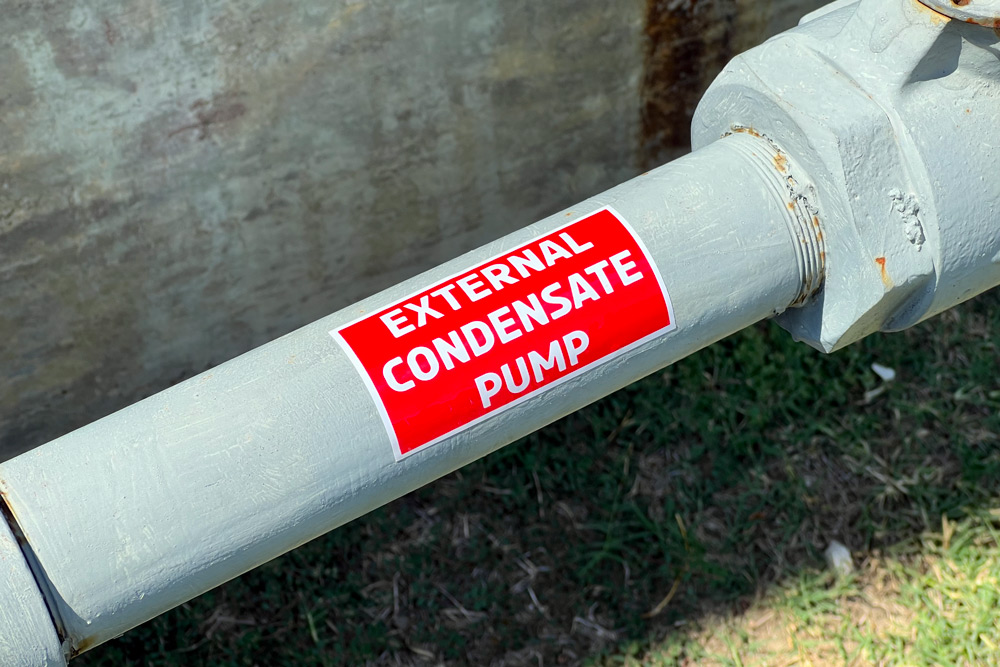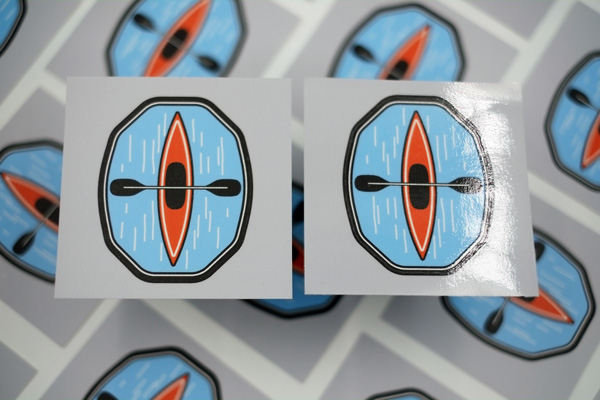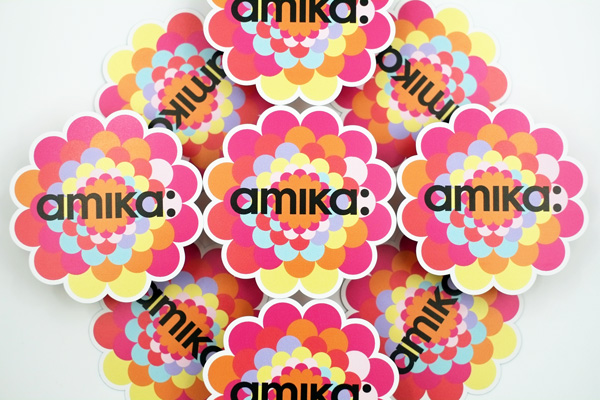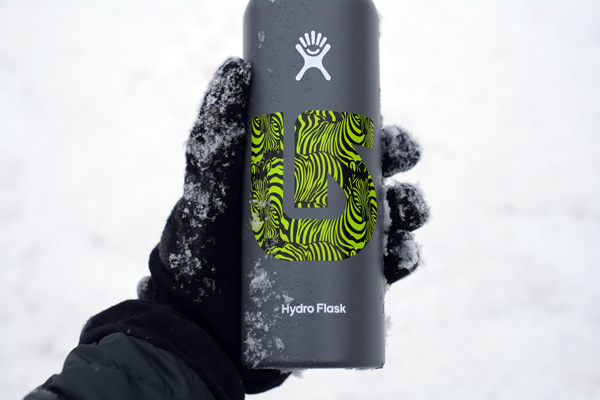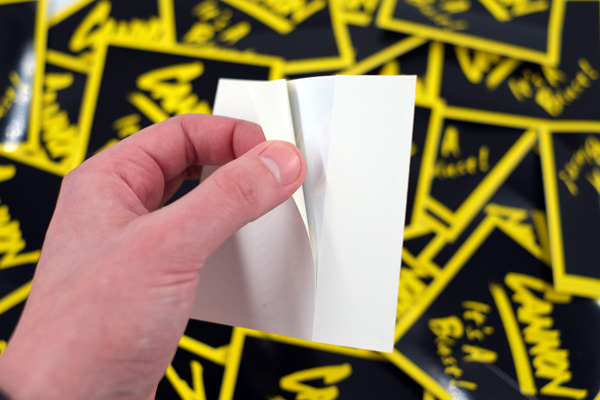What are Equipment Stickers?
Industrial equipment stickers are labels or decals that are used to identify and provide information about industrial equipment. These stickers can be used to indicate the manufacturer, model, serial number, safety warnings, operating instructions, and other important information about the equipment. They are commonly found on industrial machinery, equipment, and vehicles, such as forklifts, cranes, and generators.
What is the purpose of Industrial Equipment Stickers?
These decals serve a variety of important purposes, with the primary purpose of communicating safety and operating instructions to users. Below are the most common uses of industrial decals:
- Identifying the Equipment: ID stickers are used to identify the equipment, including its manufacturer, model, and serial number. This information can be used to track the equipment’s maintenance history, as well as to identify it in case of theft or loss.
- Providing Safety Information: Safety stickers are used to provide information and warnings about the equipment. They may include information about safe operating procedures, capacity limitations, and potential hazards associated with the equipment. This helps operators to use the equipment safely and to avoid potential accidents or injuries.
- Operating Instructions: Stickers provide information on how to operate the equipment safely and effectively. This may include information on how to start and stop the equipment, as well as information on any controls or buttons.
- Compliance and Regulations: Industrial equipment often is subject to regulation by OSHA, other government agencies, and industry bodies that require certain information to be displayed on the equipment. These stickers can indicate compliance with regulations and standards, such as labeling equipment with information about chemical composition and proper disposal.
- Asset Management: Keeping records of each piece of equipment’s information in one place, such as on the sticker can make it easier to inventory, track and maintain equipment.
Overall, the purpose of industrial equipment stickers is to provide important information about the equipment, which can help operators to use the equipment safely and effectively, and help with the management and maintenance of the equipment.
What type of Equipment are these stickers used on?
Industrial stickers are used on a wide variety of equipment and machinery in many different industries. Some examples of equipment that industrial stickers may be used on include:
- Heavy machinery and equipment used in construction, mining, and manufacturing, such as excavators, bulldozers, and assembly line machinery
- Transportation equipment, such as trains, trucks, and buses
- Agricultural equipment, such as tractors and combines
- HVAC and other home services equipment
- Medical equipment, such as hospital beds and imaging machines
- Laboratory equipment, such as microscopes and centrifuges
- Electrical and electronic equipment, such as control panels and circuit boards
These types of stickers are often used to label or identify the equipment, provide warning or safety information, or display certifications or other information required by regulations.
What type of sticker material is recommended for industrial stickers?
Industrial equipment stickers should be made from materials that are durable, resistant to environmental conditions, and able to withstand the wear and tear of the equipment they are applied to. Some of the most commonly used materials for industrial equipment stickers include:
- Vinyl: Vinyl is a flexible and durable material that is resistant to water, chemicals, and extreme temperatures. It is often used for labels and decals that will be applied to curved or irregular surfaces.
- Polyester: Polyester is a strong material that is resistant to fading, chemicals, and extreme temperatures. It is often used for labels and decals that will be exposed to sunlight or other sources of UV light.
- Polycarbonate: Polycarbonate is a tough, transparent material that is resistant to impact, chemicals, and extreme temperatures. It is often used for labels and decals that will be applied to equipment that will be subject to rough usage or exposure to industrial environments
- Aluminum: Aluminium is also used for industrial equipment where it will be exposed to harsh environments, it provides a strong and long-lasting labeling solution.
- Reflective materials: Reflective materials, such as reflective vinyl or 3M reflective material, can be used for labels and decals that will be applied to equipment that will be used in low-light or nighttime conditions. This material is used to make reflective stickers.
In addition, the adhesive used to attach the sticker to the equipment is also important. It should be strong enough to keep the sticker in place, but also able to withstand harsh environmental conditions and be removable without leaving residue behind.
Ultimately, the type of material used for industrial equipment stickers will depend on the specific application, the environmental conditions the equipment will be exposed to, and the requirements of the equipment owner or operator.
How should equipment decals be printed?
There are a few different methods that can be used to print industrial equipment decals, depending on the specific requirements of the decal and the equipment it will be applied to. Some of the most common methods include:
- Screen printing: Screen printing is a traditional printing method that involves using a stencil or mesh screen to apply ink to the decal material. This method is often used for printing large quantities of decals and is well-suited for printing solid colors or simple designs.
- Digital printing: Digital printing is a more recent printing method that uses a digital file and a specialized inkjet or thermal transfer printer to print the decal. This method is well-suited for printing detailed or photographic designs and allows for easy customization of each decal.
- Thermal transfer printing: This is also a digital printing method, thermal transfer printers use a heated print head to transfer ink from a ribbon to the decal material. This method is useful for printing on a wide variety of materials, including those that are heat-sensitive and is well-suited for printing barcodes, serial numbers, and other data that is required to be printed on the equipment decals.
- Cut vinyl, also called Transfer Decals: This method is also popular in industrial equipment labeling, it uses cut vinyl to create decals. This method is especially useful for creating labels and decals with simple text or designs and can be done in any color.
When printing decals, the label material and ink should be compatible and able to withstand the environmental conditions the equipment will be exposed to. For example, if the equipment will be exposed to high temperatures or chemicals, the ink and decal material should be able to withstand those conditions without fading or breaking down.
It’s essential that the final product of the decals are of good quality, clear and legible so that it can be used for equipment labeling and identification.

